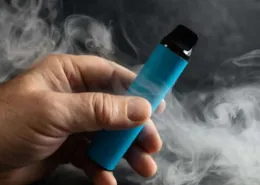The Rules and Etiquette When Vaping in UK Public Spaces
Vaping in public spaces has become an increasingly prevalent topic of discussion in the United Kingdom, with regulations and social norms constantly evolving. As a vaper, it’s crucial to understand the current laws and etiquette surrounding vaping in public places to ensure a harmonious coexistence with non-vapers. At Ecigator, our mission is to provide practical advice and insights to help you navigate these spaces responsibly.
Understanding the Current Vaping Rules in the UK
To vape responsibly in public spaces, it’s essential to understand how vaping is regulated in the UK. The UK Health Act 2006, which governs smoking in public places, does not cover vaping. Public Health England confirms that vaping is not included in smoke-free legislation. However, most public venues and transport services follow similar rules for both smoking and vaping.
Restrictions in Public Places
While vaping isn’t regulated as strictly as smoking, it is widely restricted in enclosed public spaces. You can vape outdoors in most places, but always be aware of posted signs. Major hospitals do not have designated vape-friendly zones, and although some areas have considered allowing such zones since 2021, there is no widespread adoption. Pubs and restaurants often enforce their own policies, with many prohibiting indoor vaping. Always ask about the venue’s rules before you start vaping.
Vaping vs. Smoking Laws
Although technically different in the eyes of the law, vaping and smoking are often treated similarly in public spaces. Vapers should be prepared to face the same restrictions as smokers. For instance, vaping is typically prohibited inside trains, planes, and enclosed music venues, even though it is allowed outdoors. Airlines uniformly restrict vaping on flights and may even restrict it within terminal buildings.
Understanding these nuances will help you make informed decisions and maintain social harmony while enjoying your vape. Always check for signage and ask local authorities or venue staff if you have any doubts.
Vaping Etiquette: Respecting Others in Public Spaces
Vaping in public spaces isn’t just about following the law; it’s also about showing respect for those around you. While vaping is more socially accepted than smoking, there are still unwritten rules to follow to avoid causing discomfort or conflict.
Considering Social Norms
Social norms play a significant role in how vaping is perceived. Most people associate the sight of vapor with smoking, which can cause unease, particularly in enclosed public spaces. Research shows that current use of e-cigarettes among 11-17 year olds is considerably higher among current smokers (57%) than former smokers (42%) or never smokers (2.3%). When in doubt, err on the side of caution and avoid vaping in crowded or enclosed areas.
Respecting Others’ Preferences
Respect is fundamental when vaping in public. Always be aware of your surroundings and the people near you. If you’re in an outdoor space, try to find a less crowded area to vape. In social settings, it’s polite to ask others if they’re comfortable with you vaping, especially if you’re close together. Remember, the visibility and scent of vapor can be intrusive; what smells pleasant to you might be bothersome to others.
Choosing Appropriate Vaping Locations
Choosing the right place to vape is essential. Outdoor areas are generally your best bet, but even here, consider factors like wind direction and crowd density. A 2023 survey by ASH shows that holding the transition probabilities constant at 2023 rates still results in smoking in the UK. Many restaurants and cafes may allow vaping outdoors but not indoors, so it’s wise to confirm with the staff. Public transport is almost universally off-limits; all major train operators and the London Underground ban vaping. Similarly, vaping on buses, coaches, and taxis often follows the same rules as smoking.

Ecigator Sticky Prefilled Pod Kit
The Ecigator Sticky Prefiiled Replaceable Vape Pod Kit is new kind of vape kit which the prefilled disposable pod can be changed.
That means you don’t need to throw away the whole kit but just change another pod. Also you can change the pods to taste different flavors.
Health Concerns and Public Attitudes
Secondhand Vapor and Its Impact
Secondhand vapor is a key area of consideration. Public Health England has stated that there are no identified health risks to bystanders from passive vaping. Unlike secondhand smoke, which is proven to cause harm, secondhand vapor does not contain harmful levels of nicotine or other toxic substances found in cigarette smoke. However, some individuals might still find the presence of secondhand vapor irritating, especially those with respiratory conditions. Adopting the etiquette of asking before vaping indoors can help mitigate discomfort among bystanders.
Public Attitudes Toward Vaping
Public perception of vaping can be mixed, largely influenced by ongoing media reports and public health campaigns. Societal acceptance still lags behind that of smoking, with many people associating the act of vaping with smoking, potentially leading to negative judgments. Vapers can play a role in shifting public attitudes by being considerate of their surroundings and avoiding vaping in crowded or enclosed spaces. Small actions, like moving a few steps away from others before vaping, can make a significant difference in fostering a more positive public perception.
Research on Vaping Risks in Public Settings
Research into vaping risks in public settings is ongoing. Current evidence suggests that the risks associated with passive vaping are far lower than those of secondhand smoke. For example, a study conducted by the UK Health Security Agency found no significant health risks to bystanders from secondhand vapor exposure. Nonetheless, it’s important to stay updated with the latest studies and public health guidelines as this is a rapidly evolving field. Vapers should also remain aware of the potential for e-cigarettes to trigger smoke alarms in enclosed spaces such as hotel rooms and taxis, and adhere to venue-specific policies to avoid possible fines or penalties.
Conclusion
Navigating the landscape of vaping in UK public spaces requires a clear understanding of current regulations and social norms. While vaping is not covered under the UK Health Act 2006’s smoke-free legislation, most public venues and transport services apply similar rules to both smoking and vaping. Vapers can expect restrictions in enclosed public areas such as trains, planes, and indoor music venues.
Being mindful of social norms, respecting others’ preferences, and choosing appropriate vaping locations are key to fostering a more positive perception of vaping in public spaces. Health concerns related to secondhand vapor are significantly lower compared to secondhand smoke, with Public Health England stating that there are no identified health risks to bystanders from passive vaping. However, it’s still considerate to ask before vaping indoors, especially around individuals with respiratory conditions.
Balancing the rights and responsibilities of vapers and non-vapers ultimately comes down to mutual respect and awareness. By being considerate of others and staying informed about the minimal health risks posed by secondhand vapor, vapers can contribute to a more harmonious environment for everyone.
- Vaping Better for Oral Health Than Smoking, Major Review Finds - August 14, 2025
- Cook Islands Charges Australian Tourist in Vape Bust - August 14, 2025
- Brazil: Anápolis Approves Ban on Vaping in Public Spaces - August 14, 2025









